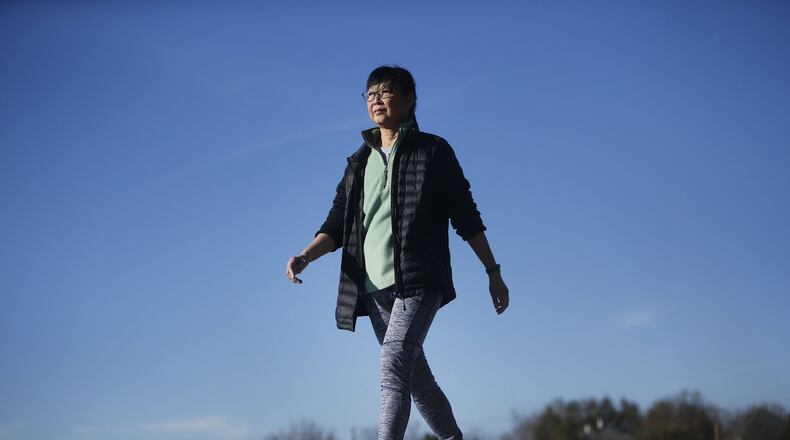If you’re younger 65 and have never exercised, start now. It’ll reverse damage to an aging or sedentary heart, plus set the stage for a reduced chance of heart failure in the future.
Such are the findings of a two-year study conducted by the Dallas-based Institute for Exercise and Environmental Medicine, a collaboration between UT Southwestern Medical Center and Texas Health Presbyterian Hospital Dallas. Study results were published recently in Circulation, a journal of the American Heart Association.
There are two caveats: To get the most benefit, people need to start before age 65. They must also work out four to five times a week, varying intensity and duration.
Dr. Benjamin Levine, senior author of the study and director of IEEM, says the study shows that if you want to remain vigorously active as you age, “exercise needs to be part of your personal hygiene.”
“It’s not something that gets added onto the end of the day: You brush your teeth, you change your clothes, you eat your food,” he says. “You do these things for personal hygiene. Exercise is as important as these. You need to find ways to incorporate it.”
Three years after being part of the study, Mae Onsry hasn’t stopped exercising. “If I haven’t done it, I’m like, ‘Oh my gosh, I didn’t do it today! I have an hour before the sun sets. I can do it!’ ” says Onsry, a now-avid walker who is 66 and lives in Dallas. “It’s so addictive.”
She had never followed a workout routine before volunteering to be part of the study, but adapted easily to the three- and later four-day weekly schedule. “I don’t want to get sick when I get old,” she says. “The heart, you can do something for it.”
Onsry was one of more than 50 men and women ages 45 to 64 who were recruited to help answer this question: “How much of aging is related to gradual loss of function of cells over time and how much to conditioning?”
Participants were divided into two groups. Half, including Onsry, participated in supervised cardiovascular exercise; the control group focused solely on yoga and balance training.
At the end of two years, the control group showed no cardiovascular benefits. But the exercise group showed an 18 percent improvement in their maximum oxygen uptake, or how the body uses oxygen, during exercise. They also had more than a 25 percent improvement in compliance, or elasticity, of the left ventricle of the heart.
Why is that important? “Imagine a brand new box of rubber bands,” Levine says. “You take them out of the box, stretch them and they snap back. Stick them in a drawer for 10 years and what happens? They’re stiff; they’ve lost elasticity. That’s what happens to many parts of the human body. Think of your eyes — you need bifocals; your skin — you get wrinkles. Your muscles and your joints and your heart.”
The left ventricle is significant because it’s the chamber that pumps oxygenated blood back into the body.
“When the muscle stiffens,” Levine says, “you get high pressure and the heart chamber doesn’t fill as well with blood. In its most severe form, blood can back up into the lungs. That’s when heart failure develops.”
Previous IEEM studies had shown that by age 70, the effects on the heart of aging and being sedentary couldn’t be reversed. Researchers, though, found late middle age to be “the sweet spot,” says Levine, who holds the S. Finley Ewing Chair for Wellness at Texas Health Dallas and the Distinguished Professorship in Exercise Sciences at UT Southwestern, where he is a professor of internal medicine.
Although results of the study didn’t come as a surprise, he says, what did was “how dramatic the effect” of exercise was.
Levine, who hasn’t missed more than two days a week exercising in 40 years, recommends workouts with “diversity in duration, intensity and mode. I think everybody should do one long workout a week, at least an hour. I don’t care if it’s tennis or a bike ride or a brisk walk with the family or Zumba. It’s good for the soul as well as the body.”
Everyone should also do one day of high-intensity training, which alternates short bursts of energy with rest periods. “That’s one of the most effective in everything we do,” Levine says, “and supports burst activities like running for a bus or having a fright.”
That leaves two to three days for 30-minute workouts in which you’re “breaking a sweat, being a little short of breath but able to carry on a conversation,” he says. Round out the week with at least one day for a strength-training session.
“It’s my prescription for life,” he says. “I think our society needs to be reorganized along that strategy.”
One more thing: Even if you’ve passed that “sweet spot” age, don’t let that stop you from exercising, Levine says.
“Even if you’re over 65 (when you start), there are still benefits,” Levine says. “I don’t want there to be the takeaway of it being too late. If you want to preserve the youthful structure of your heart, even if you’re in late middle age, you can still do that. After that time, it’s no longer possible. You can still get benefits, many, but if you wait too long, you can’t reverse the damage or alter the structure of your heart.”
About the Author
The Latest
Featured


